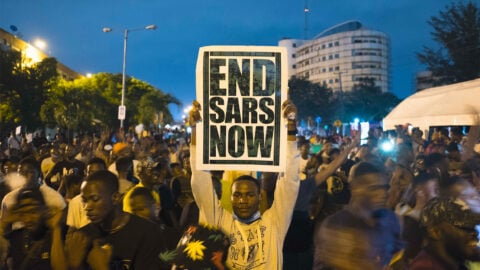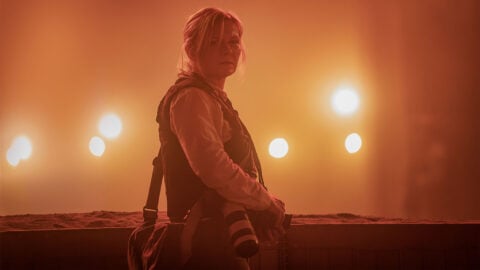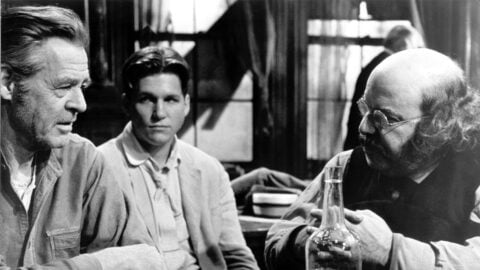By Jonathan Rosenbaum, Lauren Sedofsky, and Gilbert Adair in the September-October 1974 Issue
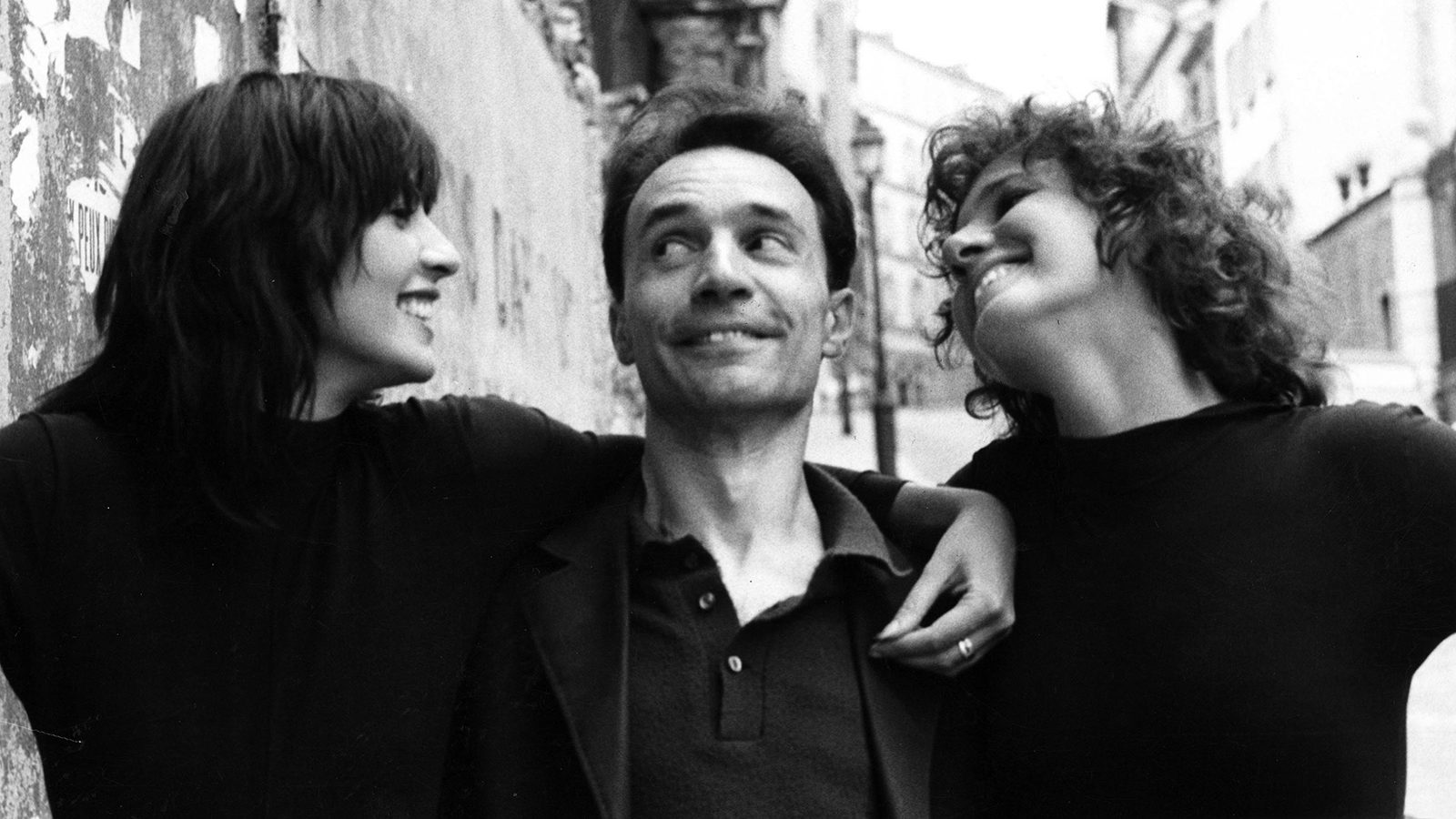
Interview: Jacques Rivette
Three critics sat down with the enigmatic filmmaker shortly after the 1974 release of Celine and Julie Go Boating
Last June, I invited two of my friends—Gilbert Adair and Lauren Sedofsky—to join me in an interview with Jacques Rivette. All three of us had been dazzled by Céline et Julie vont en Bateau (Celine and Julie Go Boating), to the point of considering it the most important new film we’ve seen in years, and it seemed exciting to extend our folie à trois to a meeting with the director.
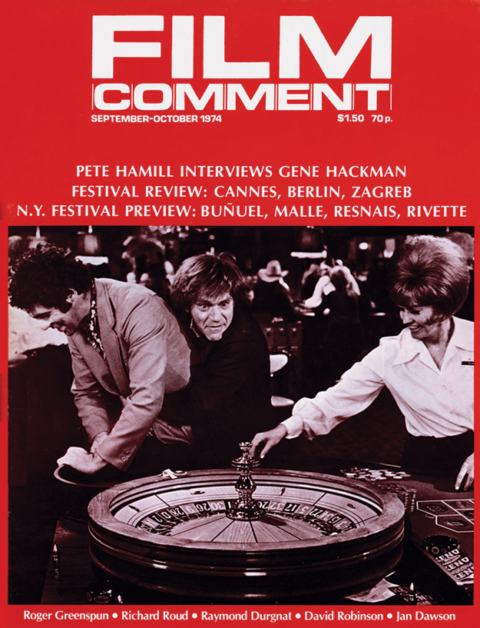
From the September-October 1974 Issue
Also in this issue
Interview: Jacques Rivette
By Jonathan Rosenbaum, Lauren Sedofsky, and Gilbert Adair
Rivette arrived at my apartment in early afternoon, and with disarming directness put himself entirely at our disposal. When I presented him with a copy of the May-June Film Comment, he leafed through it with interest and asked about the commercial fates of the last two Altman films in America. He explained—always in French—that he’d recently become interested in Altman after viewing The Long Goodbye, and had already seen Thieves Like Us twice. Throughout the afternoon, he spoke of cinema as a devoted moviegoer, someone who “keeps up” as strenuously as he did when he was a practicing critic, and continues to have precise and articulate opinions about what he sees. (For whatever it’s worth, I’ve seen him more often at Cinémathèque screenings over the past five years than all other local directors I know combined.)
Rivette might be the slowest of the New Wave directors to attain recognition, but historically he is the first of the important Cahiers critics to have embarked on a feature film. Paris Nous Appartient (Paris Belongs to Us) was released in 1960, the year after Breathless and The 400 Blows, but it was made between 1957 and 1959. An anguished portrayal of a milieu of outsiders—an impoverished but ambitious theater group, a paranoiac American expatriate, and other marginal figures occupying seedy one-room flats—Paris is the most oppressively Langian of Rivette’s films, oscillating between poetic visions of grandeur (cf. the title) and alienated nightmares of despair (reflected in the opening epigraph, “Paris belongs to no one”).
The frustrated search for a Master Scheme that motivates the heroine of Paris is partially echoed in the efforts of Suzanne Simonin (Anna Karina) to find meaning in 18th-century convent life in La Religieuse (The Nun), Rivette’s second film. Ironically, it was the banning of this film by the French Minister of Information in 1966 (a decision eventually reversed) and the ensuing scandal that first introduced Rivette’s name to a wider public. But as often happens in such cases, it was a reputation essentially based on a misunderstanding. The real scandal came one year later, when Rivette abandoned traditionally constructed cinema to embark on the seminal adventure of L’Amour Fou, a 252-minute fresco with Bulle Ogier and Jean-Pierre Kalfon that was shot in day-to-day collaboration with cast and crew, and then edited to juxtapose love with madness, 16mm with 35, and theater rehearsals with domestic psychodrama.
Every Rivette film has its Eisenstein/Lang/Hitchcock side—an impulse to design and plot, dominate and control—and its Renoir/Hawks/Rossellini side: an impulse to “let things go,” open one’s self up to the play and power of other personalities, and watch what happens. Rivette is explicit about this distinction in the last part of our interview, but all his films display some measure of both aloofness and interaction. The tension felt is one between outsider and insider, voyeur and participant, the “plotting” of Lang’s Dr. Mabuse and the “acting” of Renoir’s Dr. Cordelier (in the role of Opale). In Paris, it is Mabuse who maintains the upper hand: not only the characters but most of the actors portraying them seem to be suffocated by the machinations of the script. In The Nun, Anna Karina’s acting as well as her role describes a heroic attempt to discover freedom, and the depth of her performance already marks an advance in Rivette’s development. But it is only with the volcanic creations of Kalfon and Ogier in L’Amour Fou that he truly finds his métier, reformulating his aggressiveness by displacing it from script writing to editing, and seeking to make the shooting in between as free and open as possible.
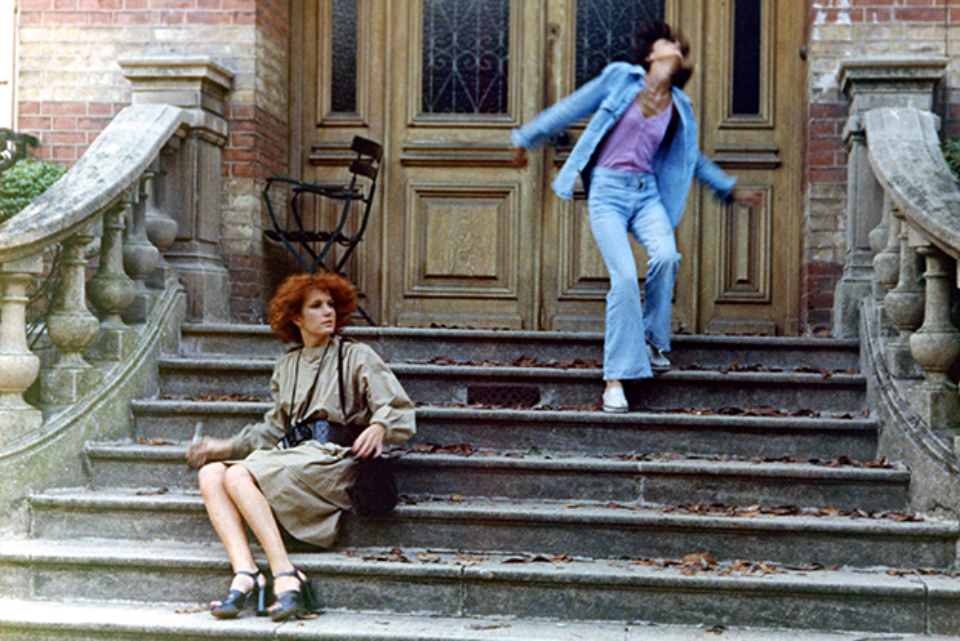
Celine and Julie Go Boating (Jacques Rivette, 1973)
“Someone like Rivette, who knows the cinema much better than I, shoots little; one doesn’t speak of him, or hardly ever… If he had made 10 films, he would have gone a lot farther than I.” My records don’t tell me when Godard said this, but it is more than relevant today when we consider that next to Godard’s two dozen or so features Rivette has made, to date, only six. The relative durations of the oeuvres is less disproportionate: by rough calculation, Godard’s is about 37 hours long next to Rivette’s 28. But taking into account the length of time spent by Rivette between films, the two careers are not really comparable. Rivette has embarked on a tournage only five times, but the entire output of some of his contemporaries—including Chabrol, Truffaut and Rohmer—contains less radical development than the distance separating any two Rivette projects. Six steps in all, but each step has been a giant one: even, to judge from reports, the one taking place between Out and Spectre. (It is relevant that after the completion of the former, Rivette devoted something like a year to the editing of the latter.)
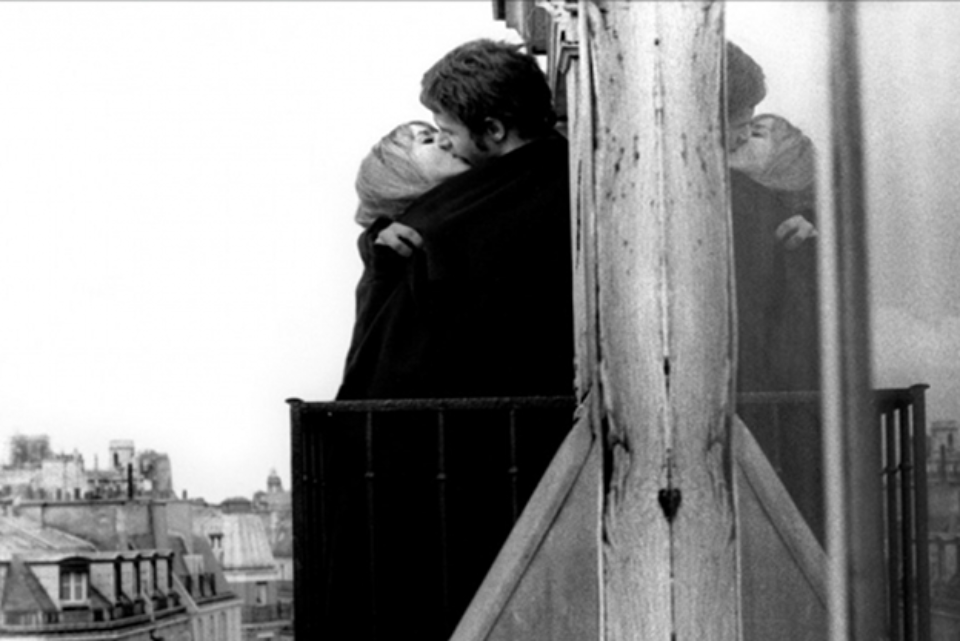
L'Amour fou (Jacques Rivette, 1969)
The three features Rivette has made since L’Amour Fou are described below by my colleagues. Unquestionably, it was the experience of Out and Spectre that made Céline et Julie possible; perhaps, it’ll be the audience’s experience of the latter film that will help to make the earlier two accessible, materially as well as conceptually.1 Together and separately, these three films are almost certainly the most significant events in the French cinema since the May Events in 1968.
Lauren Sedofsky: Out/Spectre is very much a work of its time. It tends to turn the overwrought canons of modernism on their ears in its ironic acceptance of Flaubert’s complaint that “We have too many things and not enough forms.” It is precisely a desire to maintain “too much,” the excess which overflows any closure, that informs Out and its shorter reorganization, Spectre. Rivette’s six weeks of shooting and some 30 hours of rushes were harnessed by a particular relation between chance and design which makes his effort an extraordinary cinematic instance of the “open work.” The design for Rivette consists in a totally arbitrary framework on which chance may play in its infinite variety. Like the arbitrary parameters of 16mm camera, 35mm camera and the theater in L’Amour Fou, which generate infinitely rich cross-references of representation, the choice of actors in Spectre and their freedom to invent their characters, to improvise their own definitions, leads naturally to a series of encounters and a system of exchanges.
To set these elements in motion, Rivette employs an animating device, Balzac’s Histoire des treize. Only through the messages from Balzac and Carroll’s “The Hunting of the Snark”—gratuitously received by Colin (Jean-Pierre Léaud), a sham deaf-mute, and leading to his suspicion of a utopian conspiracy—can the actors projections begin to interact. Colin’s attempts to decipher these messages, which parallel the spectator’s desire to penetrate the film’s mechanism, ironically reactivates, however feebly, the connections between a number of paranoid universes. Further complications are brought about by the blackmailing venture of Frederique (Juliet Berto), another marginal character whose monetary interests accidentally lead her to conspire against the seeming conspirators.
If Rivette’s work is “open” by virtue of the special concept of the film as a group venture, it is also “open” by virtue of a recognition of the implicit infinity of editing potentialities. Spectre is a film en marge created out of the same material as Out, but one third its length and intended to be as different as possible. In its difference, it proposes to the spectator a plural vision, a tolerance, not of shifts in time and points of view already common in cinema, but of thoroughly independent “cuttings” of reality, no one of which is more privileged than another. To this extent Rivette participates in a contemporary acceptance of phenomenological incompleteness. In Spectre he works actively against all totalizing principles, including his own, thereby dissolving the plot (understood as conspiracy and narrative).
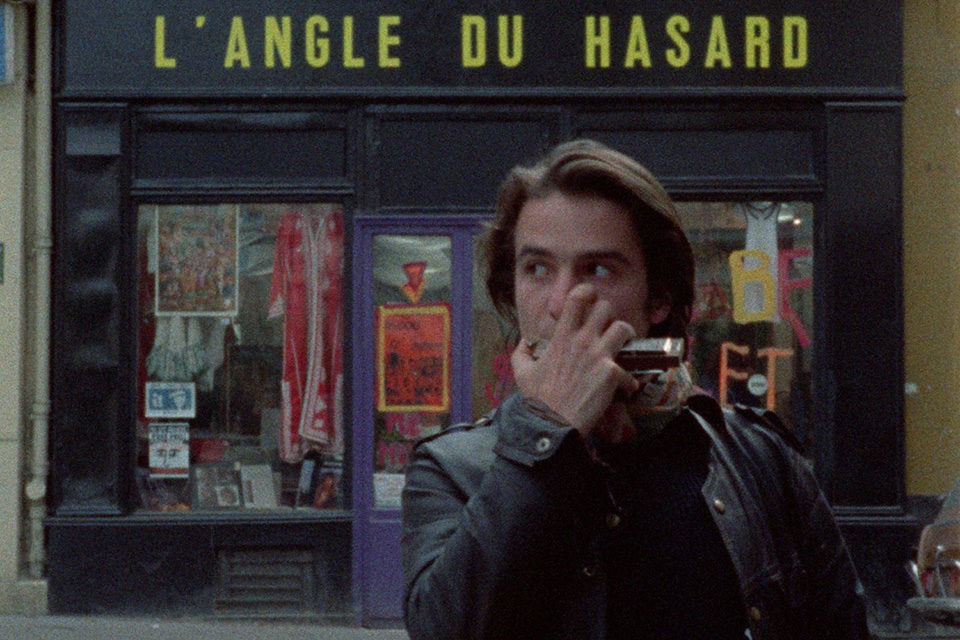
Out 1 (Jacques Rivette, 1971)
More radical still is the extent to which Rivette has dispensed with the referential aspect of film. His research is very much a part of a time when the world is no longer given as evident or accessible, when the work can no longer refer to reality, but must construct it. His hypothetical location of Spectre in “Paris and its double,” then, must make one think of Artaud (Le Théâtre et son Double). Like Artaud, Rivette has created a “nontheological space” (Derrida) which admits the tyranny of neither text nor auteur. It is a space in which the actor’s grammar of gesture and voice may play creatively, without impediment. Unlike the rehearsals of Andromaque in L’Amour Fou, Michèle Moretti’s preparation of Seven Against Thebes and Michel Lonsdale’s of Prometheus Bound reveal groups not moving inexorably toward representation, but bound by exercises and experiments in their own expressive potentiality.
Theater has been central for Rivette because, as he has noted, it is in the theater that truth and lies are at issue. The utopian plot is its mirror pretext, which congeals and dissolves largely to display the sensual values on the screen, which are purely those of spectacle. Spectre is largely a meditation on the actor and his natural capacity to generate fiction, a nexus of meanings in which the spectator is caught and from which he can emerge with a critical response, in post-Brechtian fashion, only by discerning the lapses, the hesitations, the cracks in the surfaces. Only the breakdown in artifice, the deconstruction of the plot can identify the film as fabulation. Only the recognition that the film doesn’t “work,” that it poses all questions and answers none, can point to the absence at the center of all fiction.
But this spectacle generated to supplement the absence strikes the spectator with erotic force. As Rivette has said, it carries all the weight of significance “as would a statue, a building or an enormous beast.” And the teasing density of the shots of Place d’Italie toward the end of Spectre, like the black page in Tristram Shandy, arouses our desire by refusing all interrogation. This tantalizing, fugitive element acts as a kind of philtre, eliciting our critical and creative consciousness. It is the mysterious dark underside of fiction that leads to the amazing erotic parthenogenesis of Céline et Julie vont en Bateau.
Gilbert Adair: It is not the least charming aspect of Céline et Julie vont en Bateau that its “plot” is almost impossible to relate. The critic faced with such a task can only seek refuge in the all too fragile protection of quotation marks, whose resemblance to raised eyebrows has never been more apt. For the whole movie, like a dream, is set between quotation marks; like a dream, it is an anagram of reality, open to as many interpretations as there are spectators, a Rorschach ink blot, with which, moreover, it shares the same curious mirror silhouette. Anyhow, here goes: Julie (Dominique Labourier) is a librarian living in Montmartre, whose existence is upset one day by the intrusion of Céline (Juliet Berto), a lady magician who performs in a cheap nightclub. After a brief flirtation (in a sense as sexual as you please to make it) the two girls move in together and the film properly begins. Céline has a story to tell—but is she making it up?—about a house in which she plays nurse to a little girl. around whose life glides a strange trio, consisting of two languid young ladies (Bulle Ogier and Marie-France Pisier) and a no less “phantom” gentleman (Barbet Schroeder, also the film’s producer).
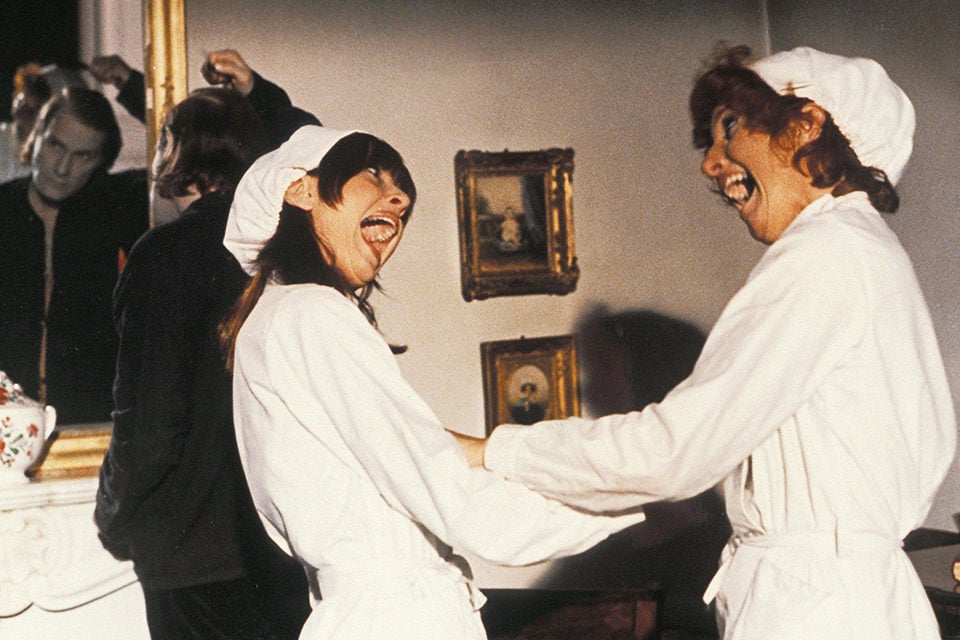
Celine and Julie Go Boating (Jacques Rivette, 1973)
Next morning, as a title helpfully informs us, Julie sets off and is ushered in turn into the mysterious house, from which she subsequently emerges, dazed and with a piece of candy in her mouth, to be whisked off in a waiting taxi, like the Rolls-Royce of the Princesse in Orphée. By sucking on the sweets which they never fail to discover on their tongues after a visit to the house, Céline and Julie are able, in a kind of bizarre “private screening,” to review the drama, solve the mystery and, in a sequence both hilarious and disturbing, exorcise the demons therein.
Curiouser and curiouser, said Alice. And the movie has much of the crazy logic we associate with Lewis Carroll’s masterpiece. In order to make sense out of its partially improvised narrative, the spectator, too, must be prepared to improvise, to constantly renew his expectations, never able to settle down in his seat with the comfortable idea that this is, once and for all, a comedy, a mystery, or even a fantasy. The events of this film do not simply proceed from left to right, as it were, in front of his eyes; each act generates that which follows it—as, in Alice, when she cries, her tears form a pool, the animals race to get dry, etc.—so that the narrative “procession” appears rather to advance at a right angle to the spectator, forcing him to chase after it.
The spectator is assisted in this chase by the movie’s richly allusive texture, both cinematic (Cocteau, Minnelli, Chytilova’s Daisies) and literary; one thinks of Henry James (less the obscure play that served as inspiration than of some odd marriage between What Maisie Knew and The Turn of the Screw), Borges, and even Kafka. And the piece of candy is not only Proust updated (worth noting, in this respect, that the little girl’s name is Madlyn, which contains both the Proustian madeleine and the highly appropriate madly) but also acts as a kind of “go-between,” permitting access to the past, that “foreign country” in which, as L. P. Hartley wrote, “they do things differently.” For this “country” Rivette and Eduardo de Gregorio have found the perfect language, deliciously stilted and démodé, especially when it is sent up by the cartoon-inspired antics of the two heroines (Juliet Berto in particular, a splendidly filled-out Tweety Pie), giving the final sequence in the house, for example, something of the nightmarish quality of Tex Avery’s blending of animation and live action.
Céline et Julie is a kind of Tangram, the Chinese puzzle in which a player, given seven basic elements—five triangles of varying sizes, a square, and a parallelogram (which might correspond here to the three “ghosts,” the little girl, the piece of candy, and Céline and Julie themselves)—has innumerable figures to make out of them, most difficult of all being a perfect square. But, as anyone who has played the game will know, all are difficult and yet all are possible.
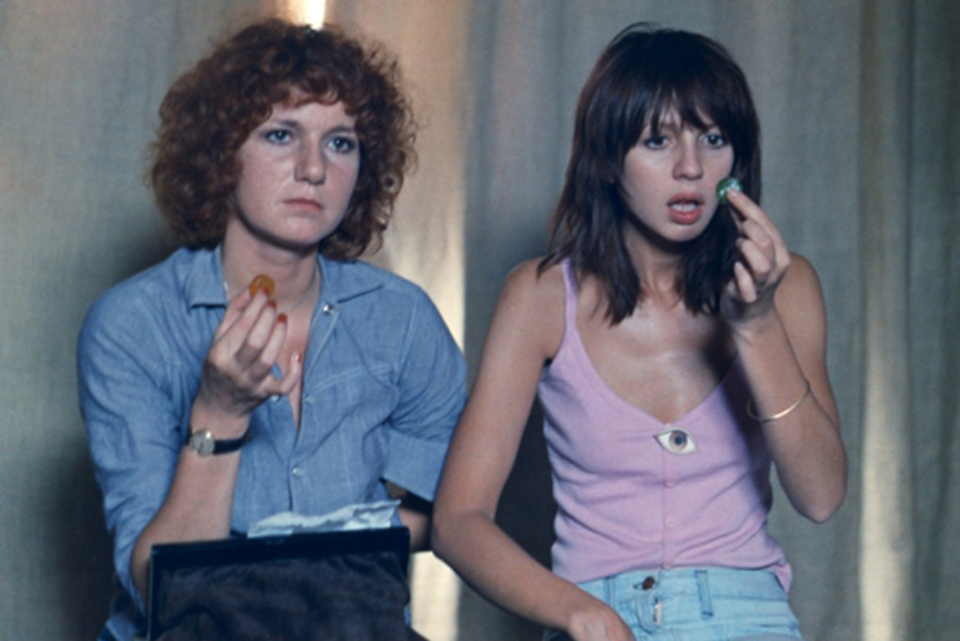
Celine and Julie Go Boating (Jacques Rivette, 1973)
[The interview begins below.]
JONATHAN ROSENBAUM: How was Céline et Julie vont en Bateau prepared? What was the initial motive?
JACQUES RIVETTE: Simply the desire to make a film. To get out of the dumps that we all felt we were in, make a film for as little money as possible, and, we hoped, amuse people. Because the adventure of Out didn’t turn out very well, from the point of view of public reception—there was no reception. It was almost impossible to show the film. Meanwhile, there had been another project [PHÉNIX] which we couldn’t do because it was too expensive, which Juliet Berto was also involved in. When we realized about a year ago that we couldn’t bring this project to fruition, I spoke to Juliet one evening and we decided to do something else. Something which would be on the contrary very cheap, as easy to make as possible, and fun to do. The first idea was to bring together Juliet and Dominique, who were already friends: I’d often seen them together.
ROSENBAUM: There seems to be a Hollywood aspect to Céline et Julie that’s quite different from your earlier films.
RIVETTE: Yes—but Hollywood twenty years ago, certainly not today. We thought of it in reference to certain things, such as everything concerning the house. Contrary to what some critics at Cannes thought, our ambitions weren’t along the lines of parody, but rather a pastiche of an old-fashioned sort of cinema. For instance, the use of wide angles and deep focus. I thought during the shooting that the film was a little bit like an RKO movie of the ’50s, but in color—those films that more or less successfully imitated Wyler’s. There was a fad between 1945 and 1950 to use mise en scène in depth, particularly at RKO—the Gregg Toland influence. In the film’s details, we thought of several American movies. At the end, for example, the idea was to have a slapstick finish. In fact we were thinking a bit of Hawks, although we did it quite differently from the way Hawks would have. One of Hawks’ favorite remarks is that when he’s found a subject, he first of all tries to make a comedy out of it; then, if he doesn’t succeed, it’s a serious film. So we decided that the end would be completely open; it could be very dramatic or whatever we wanted. I wanted to have a slapstick finale because it seemed more amusing.
There are several scenes in the film which I had to edit a lot because they played on looks and reactions—I had to do much more editing than in L’Amour Fou or Out. And from the moment you start editing, you’re obliged to think about what Hitchcock would have done in similar circumstances. But it’s only in three or four sequences that we frankly attempted to follow the principles of Hitchcockian editing. For the first 15 minutes, we wanted to have the imaginary Montmartre of a studio, like the Montmartre of An American in Paris—which is why we used the second title, Phantom Ladies Over Paris, which is also the title of the interior film, if you like. 2
ROSENBAUM: Were cartoons an influence?
RIVETTE: Oh, yes. Definitely. But it was important as an idea only at the beginning. If we’d had more time and money we would have pursued it more systematically. Although it might not have changed anything. And the actresses had this in mind all the time, especially Juliet. Everything she does is always very visual, physical. Her movements are very staccato—the way she walks, the way she eats the candy.
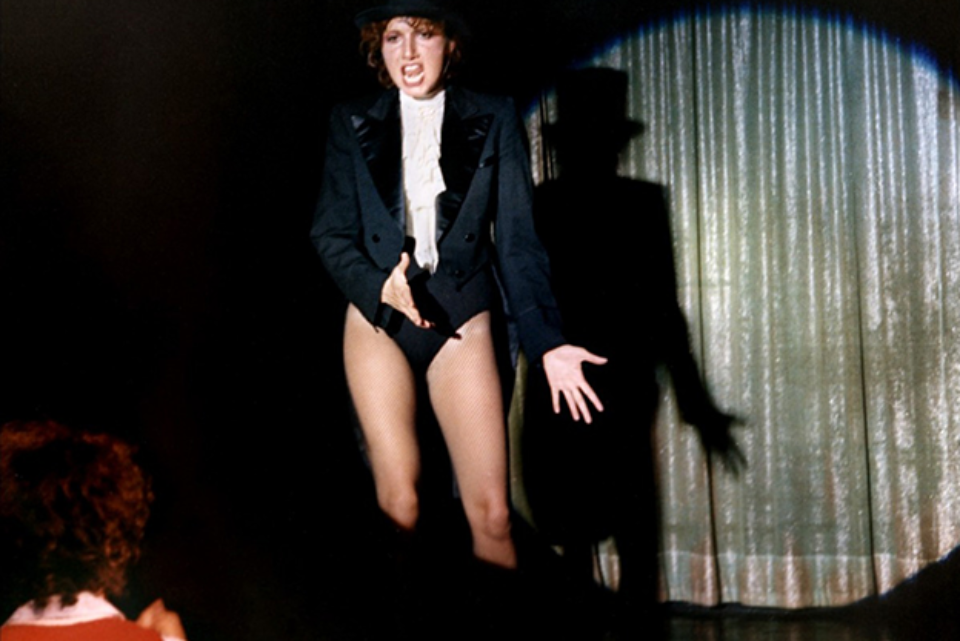
Celine and Julie Go Boating (Jacques Rivette, 1974)
GILBERT ADAIR: And Feuillade?
RIVETTE: Not at all. I don’t find the film very Feuillade-like. The scene with the girls in black tights was just a gag, lasting only 30 seconds.
ADAIR: But the whole idea of fantasy in the open air…
RIVETTE: Yes, but that’s because we were broke. It wasn’t at all a theoretical position. When we were looking for the house, we wanted it to be very homey; in fact, it’s a completely normal house, but we filmed it in such a way that it seems a little unnatural. And we were lucky to find the cats there. We didn’t bring them. All the cats are in the film simply because they were there.
ROSENBAUM: When was script writing introduced into the project?
RIVETTE: There never really was a written script. What is a scenario, after all? If it’s a project for a film, or, on the contrary, something written and then shot, I don’t do that any longer—not since L’Amour Fou—and I have no desire to do it again.
We began by elimination: we didn’t want to make a serious film; we didn’t want to make a film about the theater because we’d done that too often; we didn’t want to make a film about current events or politics. But we did have the desire from the very beginning to do something close to comedy, and even frankly commedia dell’arte. And the first thing we did after two hours of conversation was to look for the characters’ names. And we stopped there that evening. So finding the names Céline and Julie was our starting point…
The first stage consisted of conversations with Juliet and Dominique, when quite quickly the two girls organized their own characters. Then came the idea of their meeting, how the two connected. But then there was a stage—after the first half hour of the film as it now stands—where we didn’t have a clear idea, where there were all kinds of possibilities. We hesitated for about two weeks with Eduardo [de Gregorio], who had joined us by that time. We already felt that a second story was necessary within the first, for which I wanted Bulle [Ogier] and Marie-France [Pisier], in order to have another feminine pair, both in opposition and in relation to the first. But we didn’t know at all either what the second story would be or the mechanism between the two—that’s what took the longest to organize. It was by approximation, groping. It was Eduardo who suggested the Henry James novel [The Other House] which we started from, which he hadn’t read himself but had heard about. In fact, none of us has read it because we couldn’t find it. Eduardo read only the dramatization, which is apparently very boring; and I don’t read English well enough.
We didn’t want this to be a realistic investigation—we sought a less realistic principle. We thought of lots of things, like Bioy Casares—Morel’s Invention. The day when we were really happy, when I felt we’d found the trigger, was the day we had the idea of the candy. Because that was what permitted us to bring everything together.
ROSENBAUM: When did you shoot the scenes in the house?
RIVETTE: In the middle of the shooting. At first we thought of doing it later, and then for all sorts of practical reasons—because both girls had to talk about the house in their scenes together—we had to shoot it earlier. On the whole, the shooting was in three parts: first we shot more or less everything corresponding to the first part of the film—all the exteriors (the chase, etc.) and the “annexes” (like the cabaret); then the scenes in the house; then everything taking place in Julie’s apartment.
ROSENBAUM: Why did you decide to use a scriptwriter and not depend completely on improvisation after the experience of Out?
RIVETTE: Out and Céline et Julie are related, but in the end quite different. In Out there was a canvas, but inside the canvas was raw improvisation. But even in this case I wasn’t alone: I did it with a friend who was also my assistant director, Suzanne Schiffman. I like having someone by my side, anyway, as a kind of referee, not an arbitrator but someone who has other ideas. So Eduardo was there almost from the start. But I didn’t ask him to come as a scriptwriter. I asked him just to come and talk with us on the same level, and he was present during all the shooting.
ADAIR: It wasn’t that you wanted someone to write the dialogue in the house?
RIVETTE: Not really. Maybe a little. When you’re having discussions like that, it’s always useful to have several people to toss out ideas. Eduardo had already worked with Suzanne Schiffman on the Phénix project, and we were used to discussing things together very informally. It wasn’t at all work. In fact, during the shooting, Eduardo wrote two scenes in their entirety; everything else was done with us. The scenes in the house had to be written; those between the two girls were largely written by the actresses themselves. Their dialogue wasn’t definitive, but a sort of canvas on which we improvised afterward. After all, there were many precise things that had to be said; it couldn’t be totally improvised. And there was a whole system of repetition in the house, so that had to be completely written. Marie-France, Bulle, Eduardo, and I wrote out the principal scenes. But Bulle’s monologue when she’s bleeding and the scene just after, between Marie-France and Barbet [Schroeder], were done only by Eduardo.
ADAIR: In Out there are explicit references to “The Hunting of the Snark,” and the whole of Céline et Julie is saturated with the spirit of Lewis Carroll. What role did Alice in Wonderland play in the conception of the latter film?
RIVETTE: We thought of it in the first scene. We wanted Juliet’s dash in front of Dominique on the park bench to remind one a bit of the White Rabbit. The idea was that Dominique would chase her and they would both fall, not into the rabbit hole, but into fiction.
ROSENBAUM: Why did you choose the title Out?
RIVETTE: Because we didn’t succeed in finding a title. It’s without meaning. It’s only a label.
LAUREN SEDOFSKY: And Spectre?
RIVETTE: I wanted the shorter version to have its own title. I seriously looked for one. There are so many readings possible that finally there’s none.
ADAIR: How much was the spectator’s comfort a consideration in Out?
RIVETTE: To begin with, we never really envisaged making a twelve-hour film. We had the idea of dividing it into parts to be shown on television—which, I realize now, would have been a disaster. The ideal form of viewing the film would be for it to be distributed like a book on records; as, for example, with a fat novel of a thousand pages. Even if one’s a very rapid reader—which, as it happens, isn’t my case—one never reads the book in one sitting, one puts it down, stops for lunch, etc. The ideal thing was to see it in two days, which allowed one to get into it enough to follow it, with the possibility of stopping four or five times.
ADAIR: What were the reactions at Le Havre, when it was shown that way?
RIVETTE: Of course, length changes everything. And the reactions were more emphatic, subjective, and individual than for a film of normal length. Some people left before it was over, some arrived after the beginning; and among those who followed it from beginning to end, there were some who wanted to see it as a test of endurance, others because they gradually got interested. But in any case, it was impossible to judge. After you’ve gotten over the hump of the first four hours, you mainly feel inclined to stay and see it through. But that’s a facile solution, because all of one’s criteria for what is good or bad disappear, and one is experiencing purely the duré. There are some sequences which I think are failures, but after a certain number of hours, the whole idea of success and failure ceases to have any significance. Some things that I couldn’t use in Spectre are all right in the longer version. The whole actor-spectator relationship is totally different in Out, because there the actors are much more actors than characters. There are many more scenes where the sense of improvisation is much stronger, even to the point of admitting lapses, hesitations, and repetitions. There are some of these in Spectre, but relatively few, because we treated it much more as a fiction about certain characters. In the longer version, the dramatic events are a lot more distant from each other, and between them are long undramatic stretches.
ADAIR: For you, is the “ideal” spectator someone who sees the actors as actors, or someone who…
RIVETTE: No, he’s someone who’s taken in. In any case, there’s no “ideal” spectator. Even when one sees a film a second time, one is always a different spectator. At least that’s what interests me when I see a film again. Spectre, in any case, needs more than one viewing. It’s too complex the first time; it has too much information. Céline et Julie, on the other hand, is a film one understands the first time. But to return to the question, the “ideal” viewer is one who agrees to enter the fiction: it’s the least that one can demand of a spectator. When I go to the cinema, I adore films which draw me into their fictions, although it doesn’t happen very often. But as Spectre progresses, this so-called “ideal” spectator should gradually begin to realize—during the last third or quarter-that the fiction is in fact a trap, that it’s full of cracks and completely artificial, in every sense of the word, and has only been a vehicle.
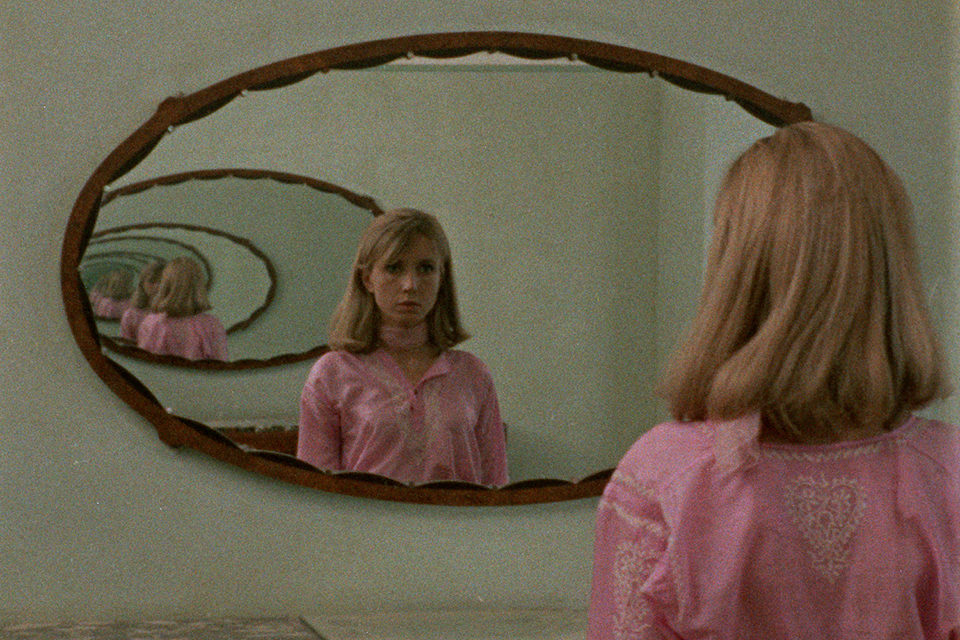
Out 1 (Jacques Rivette, 1971)
ROSENBAUM: To what extent is a viewing of Out necessary to an appreciation of Spectre?
RIVETTE: When we edited Spectre, we tried to make it as different from Out as possible, working with the same material. We didn’t quite succeed since, contrary to what I thought, there were things that couldn’t be changed. The center of the four-hour film resembles that of the twelve-hour version quite a bit. On the other hand, the first and last hours are quite different. Not dramatically—we couldn’t alter the chronology of the sequences or it would have turned into something I didn’t want to do, something along the lines of Robbe-Grillet. The feeling of time is quite different, of course, because in the long version almost nothing happens for the first three or four hours. It’s only documentary sequences of the two theater groups, Jean-Pierre [Léaud]’s distribution—of envelopes on Champs-Elysées, or the various petty thefts committed by Juliet [Berto]. Out also ends with very long sequences in which each of the actors more or less “goes to pieces” in front of the camera. It was impossible to keep extracts of this, since the interest of this was in the total duration of each scene. But contrary to what most people believe, one doesn’t learn any more in the long version than in the short one.
I’d hoped to make not one but several films of normal length, one on each of the actors, but we discovered that it was necessary to relate them all the time. And when we started Céline et Julie, our intention was to make a film of normal length. We even had to swear to it in the contract. But we didn’t succeed. Perhaps next time we’ll manage to make a movie that’s an hour and a quarter!
SEDOFSKY: What is the meaning of the opening title in Spectre, “Paris and its double”? 3
RIVETTE: I wanted the two titles to indicate that the film was shot in April and May 1970—that, for me, is the important thing, since there are many allusions in the dialogue to that period. It should be evident that the group of thirteen individuals had probably met and talked for some time until May 1968, when everything changed and they probably disbanded.
ROSENBAUM: In the final sequence of Paris Nous Appartient, set in the country, there’s a brief inserted shot of the Seine in Paris. Is the function of this shot at all related to that of the repeated shots of Place d’ltalie at the end of Out?
RIVETTE: No. In Paris it was a kind of psychological flashback, to remind one of an earlier scene on the Pont des Arts, while in Out the shots of Place d’ltalie were inserted with no psychological implications, but frankly as empty spaces. As a kind of visual silence, like the silences in modern music. But it wouldn’t have been possible to have a blank screen for that length of time. I find these shots very disturbing.
SEDOFSKY: In both films, there is also a use of still shots…
RIVETTE: There’s no relation. In Paris, the scene we shot with the Finnish model is one which I didn’t like at all, and the stills were inserted only because the film that we shot was unusable. On the other hand, the stills in Spectre were the result of our naïve hope that our twelve-hour version would be shown on television as a serial—in eight episodes lasting an hour and a half each. So at the beginning of each episode we used about fifteen stills as a kind of visual summary of the preceding episode. They aren’t single frames, but simply production stills. When we tried a shorter version, our first montage ran five and a half hours. Then to make a commercially feasible length, we used the stills to tighten the editing, much the way that Jean-Luc uses titles more and more in his films, as in La Chinoise. Every time there was an editing problem he had recourse to a title. But finally we spent more time on these photos than on anything else, because there were a priori so many possibilities. We wanted the relation between the film and the stills to be neither too close nor too distant, so it was very difficult to find just the right solution.
Then we added the sound to the stills. They didn’t work without sound, because the silences interrupted either noises that were very loud or others that were just murmurs. Silence didn’t produce the effect we wanted. I wanted something purely artificial: what we have is just a meaningless frequency, as if produced by a machine, which interrupts the fiction—sometimes sending messages to it, sometimes in relation to what we’ve already seen or are going to see, and sometimes with no relation at all. Because there are stills from scenes, especially toward the end, which don’t appear in the body of the film and are frankly quite incomprehensible.
ROSENBAUM: Do you find that the “search for meaning” that creates a tension in Spectre and all your other films is resolved at all in Céline et Julie?
RIVETTE: In comedy we pretend to resolve things. And in non-comedy one ends with a non-resolution. But it doesn’t seem at all evident to me that there’s a resolution at the end. After all in the last scene the girls’ roles are reversed—but of course that’s just a pirouette…
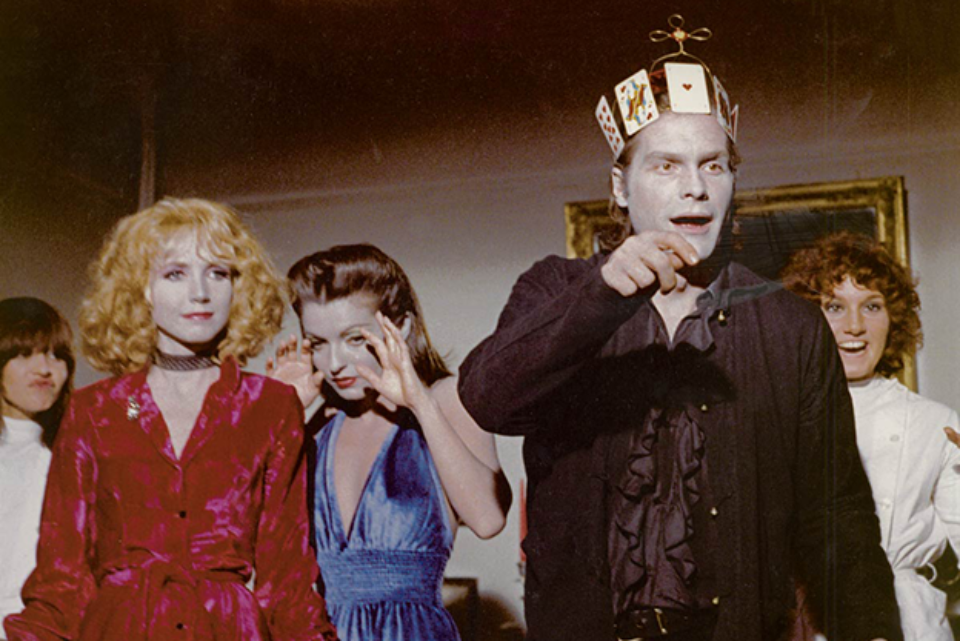
Celine and Julie Go Boating (Jacques Rivette, 1974)
SEDOFSKY: Can we say, perhaps, that the theme of the search in your earlier films has become, in Céline et Julie, a formal problem?
RIVETTE: It’s purely a question of film construction. Let me add that for me it’s the same in the other films. Because even in Paris Nous Appartient and Out (L’Amour Fou was an exception) we went through the same process: beginning with a certain number of characters, with certain relations between them, and then arriving at a stage in the preparation of the project where there was very little dramatic action. The characters have relations, they meet and so on, but they really belong to different worlds. And then there’s a stage—which was the same for Céline et Julie as for the others—which comes later, sometimes very late, that involves using a kind of fiction which I always see at first as a background and a mechanism, not the underlying motivation. Purely a narrative mechanism. It simply happened that when I wrote Paris this mechanism became too important: this fiction of the Organization, which was really there only to connect all the elements, became more important than I had planned.
In Out, I was already more careful, because the idea of the “thirteen” came rather late. For a long time we thought that the characters might never meet; perhaps there would be five or six completely different stories. We just didn’t know. Still, I had the idea that something should bring them together, and so it was Histoire des treize. But it was just a mechanism. In Paris and, even more, in Out, I don’t take the whole idea of the search for meaning seriously. It was a convenience to bring about the meetings, but it didn’t work with either film, because they were taken to be films about a search. I tried and failed to make people understand, as the film progressed, that this search led to nothing: at the end of Paris, we discover that the Organization doesn’t exist; and the more Out progresses, the more evident it becomes that this new organization of the thirteen which appeared to have been formed never really existed. There had only been a few vague conversations between completely idealistic characters without any real social or political roots. In each case there was a first part where we assembled a story of a search, and a second part where little by little we wiped it out.
For me, Céline et Julie is not very different, except insofar as the decision to make a comedy is more emphasized. To my mind, Out is also a kind of comedy. It’s less obvious in Spectre, because the condensation dramatizes it much more. And even the fact that we improvised led to an atmosphere of psychodrama, and was more likely to create a situation of aggression and violence. It’s very difficult to arrive at something more subtle. Because violence is the simplest way: this is what’s been happening in the theater for the past fifteen years. The easiest thing in the world is to roll on the ground.
So in Céline et Julie we made a great effort to control that, after the experience of Out, and remain as much as possible within a comic framework. Certain scenes between Dominique and Juliet became much more dramatic than we anticipated—which is just as well, because they were only moments. But there’s no more “truth” in this film than in the others. The only truth is that of the filmstock and the actors.
ADAIR: But it is nevertheless remarkable that what you call only a mechanism in both Paris and Out—the idea of a conspiracy—obviously permits a thematic reading.
RIVETTE: I could have found another mechanism, I suppose. But in Out didn’t want to repeat Paris, but to do a critique of it When I decided to use Histoire des treize, it was as a critique of Paris, which tried to show more clearly the vanity of this kind of utopian group, hoping to dominate society. It begins by being fascinating and tempting, but in the course of the film comes to be seen as futile.
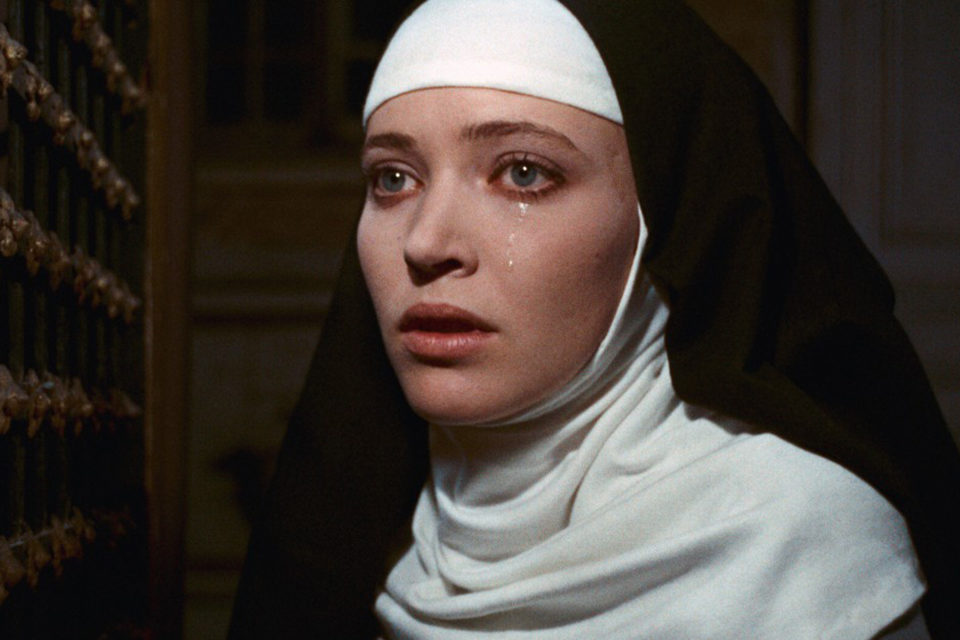
La religieuse (Jacques Rivette, 1966)
* * *
ROSENBAUM: After your experience of directing La Religieuse on the stage, 4 does improvisational theater hold any interest for you?
RIVETTE: No. La Religieuse was an opportunity that presented itself, and it wasn’t very successful. Luckily, there was Anna Karina, who wanted to play the main part. She gave an interest to the play, which was otherwise quite unsuccessful. In any event, it was a totally traditional theater piece. For me, the theater is much more a subject for films, as a metaphor of jeu and a meeting place for actors which allows for interaction.
ADAIR: And the film, La Religieuse—what does that represent for you now?
RIVETTE: I haven’t been back to see it for years. It’s far from a success. It was the film where I had the greatest means at my disposal, but still not enough, which is the worst situation—so it was the hardest to make. One can get by with very little money if one’s making a contemporary film, but insofar as this was a costume film, with a script, it was nothing but problems. During the shooting, we were completely submerged in problems of decor, costumes we didn’t have. . . we had to pretend, to create an illusion. It was a very difficult shooting and moreover, I’d been turning it over in my mind for too long. Having said that, I should one day like to do a film of mise en scène in costume. 5 La Religieuse may appear to be an uncharacteristic work, but it isn’t one for me.
ROSENBAUM: There seems to be a Bressonian side to the film…
RIVETTE: Perhaps, but that wasn’t my idea at all. It was much more ambitious. Toutes proportions gardés, it was my idea to make a film in the spirit of Mizoguchi. But it’s not Mizoguchi. There was an attempt to make a film with extended takes or even one-shot sequences, with a flexible camera and rather stylized performances. So for me it was a deliberately theatrical film. But because we didn’t have more time and a more homogeneous cast, the theatrical side was seen by everyone as a fault. Whereas it was in fact deliberate to have such a theatrical style of acting, with a very frontal mise-en-scène in relation to the camera. But this would have required more time for rehearsals, to harmonize actors from very different professional backgrounds.
ROSENBAUM: To turn to other directors’ films… How do you feel about the “American Underground”?
RIVETTE: I would like to see a lot more; I’ve seen very few. I had certain reservations about this kind of cinema, which for me was associated with filmmakers whose work didn’t interest me at all, like Kenneth Anger or certain old films by Curtis Harrington. It’s only recently that I’ve come to see some completely different films: two by Michael Snow which excited me very much, Back and Forth and La Région Centrale, although they bear no relation to the kind of cinema I do. I’ve also been very struck by films of Ken Jacobs (Tom Tom the Piper’s Son) and Peter Kubelka (Unsere Afrikareise).
ROSENBAUM: And the French cinema now?
RIVETTE: Now, I don’t know. I used to be very excited by Garrel, in 1968–69, when he made all his important films one after the other. And Tati is magnificent. If we’re going to talk about directors who are widely respected, there are many whom I greatly admire. It depends on the moment: six months ago I would have said Fellini, but Amarcord was like a cold shower after the extraordinary Satyricon and Roma. Jancso, in his last films. . . Straub. The latest Bresson [Lancelot du Lac] I find magnificent. And [Werner] Schroeter, whom I didn’t like at first, excites me more and more; above all, The Death of Maria Malibran and Eika Katapa. And Carmelo Bene . . . Resnais’ Stavisky is a beautifully filmed object, limited by a laborious script.
ROSENBAUM: What do you think of film criticism in France today?
RIVETTE: There isn’t any. I was very excited by everything Cahiers du Cinema had begun several years ago, but this was subsequently left hanging for the sake of something much less interesting and quite utopian.
SEDOFSKY: Do you find any relationship between your cinematic research and the work of such writers as Derrida, Kristeva, or Barthes?
RIVETTE: I really don’t want to talk about it… [Laughter]
SEDOFSKY: But when you’ve described the mechanism of Spectre, here and elsewhere, you have used terms which make one think of semiological discourse. . .
RIVETTE: Perhaps I’ve been influenced by my reading. . . But of course I haven’t done a serious reading of Derrida, Kristeva, or Sollers. The only one I’ve read completely and continue to read with pleasure is Roland Barthes, perhaps because he is the most accessible. And he has certain things to say which do relate to cinema, more in my case to Spectre than to Céline et Julie. The few things that Barthes has written about the cinema I find accurate, because, like me, he’s more sensitive to the sort of things that escape an overly rigorous semiological approach.
With any film, at the beginning there is a very theoretical, very abstract stage when one has ambitions that are at the same time very vast and very vague. Then, as soon as one begins to work on the practical side, one is faced with very concrete problems—relationships with those whom one is working with, especially the actors, followed by even more concrete problems in the shooting and editing.
SEDOFSKY: But obviously the concrete problems don’t efface the clearly theoretical structure of your films, the “play of elements” which is a “production of significance” . . .
RIVETTE: There are two principle ways of making films. One can make it alone as an auteur, if you like; make a product, a fabrication which corresponds as much as possible to one’s reflective activity. There is a family of such directors: Murnau, Dreyer, Eisenstein, a certain part of Godard, Bresson, Straub, and in a certain way Schroeter, von Sternberg. And then there is another way, which consists of making the film with others, meeting with certain other people. This “family” would be Griffith, Renoir and Rossellini. And as for myself, I have no desire to make a film of the first method. Even with La Religieuse, it wasn’t completely mise en scène. Even Paris isn’t really in that vein, and certainly since L’Amour Fou I’ve realized that working the first way, as metteur-en-scène, didn’t interest me, in fact bored me to tears.
In any event, I don’t know how to do it. There are others who know how: I simply don’t. So I looked for another method to get a better result. And there was the coincidence, very strong for me, that just after La Religieuse, and the whole business of the censorship, I had occasion to direct several television programs on Renoir. 6 They were deliberately made very simple, because what was interesting was to place the camera in front of Renoir and let him speak, and to show extracts from his films. First of all, we had 15 days of shooting with Renoir in the country; we stayed with him, lunched with him, so had plenty of time to speak to him. Then came three months of editing with Eustache, in which we had time to view sequences again and again, to choose the ones we wanted. To see films which I thought I knew very well, which a priori would hardly seem to assert themselves on the moviola as much as films by Hitchcock or Eisenstein, for whom editing is much more important. But despite everything, the fact of seeing Renoir’s films on the moviola made me see things differently.
1. The 760-minute Out, subtitled Noli Me Tangere, exists today only as an unprocessed workprint, has been screened publicly just once—over two days in Le Havre, in 1971—and, alas, neither my collaborators nor I have seen it. A release print can be made only if and when enough money can be raised to furnish the lab costs. (J.R.)
2. Eduardo de Gregorio has informed me that the film’s conception was also directly inspired by Frank Tashlin’s Artists and Models, which he saw with Rivette during the summer of 1973. (J.R.)
3. The action of Spectre is preceded by three introductory titles, which read as follows: “Hypothesis—location of the story: / Paris and its double. The time: April or May 1970. Meaning of the story.” (J.R.)
4. Presented at Studio des Champs-Elysées in 1963, two years before Rivette shot the film based on Diderot’s novel. (J.R.)
5. In fact, Rivette’s Phénix project is a costume film set in the late nineteenth century, with a central role designed for Jeanne Moreau. (J.R.)
6. Three programs entitled Jean Renoir, le Patron for the program Cinéastes de notre temps, in 1966, the year before L’Amour Fou. It may also be worth noting that Rivette worked as an assistant (stagiaire) to Renoir on French Cancan in 1954. (J.R)



